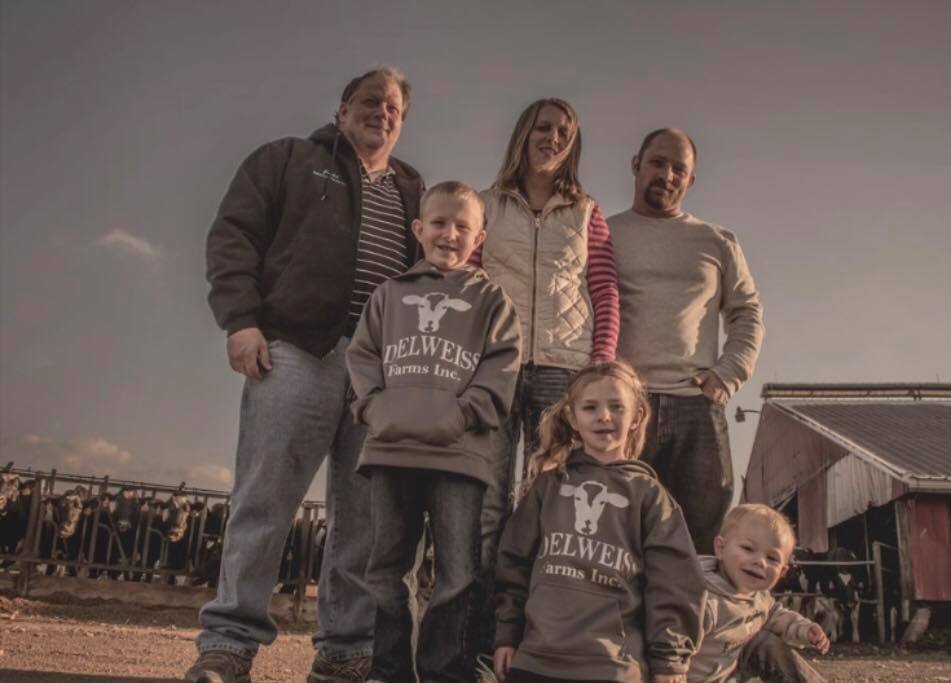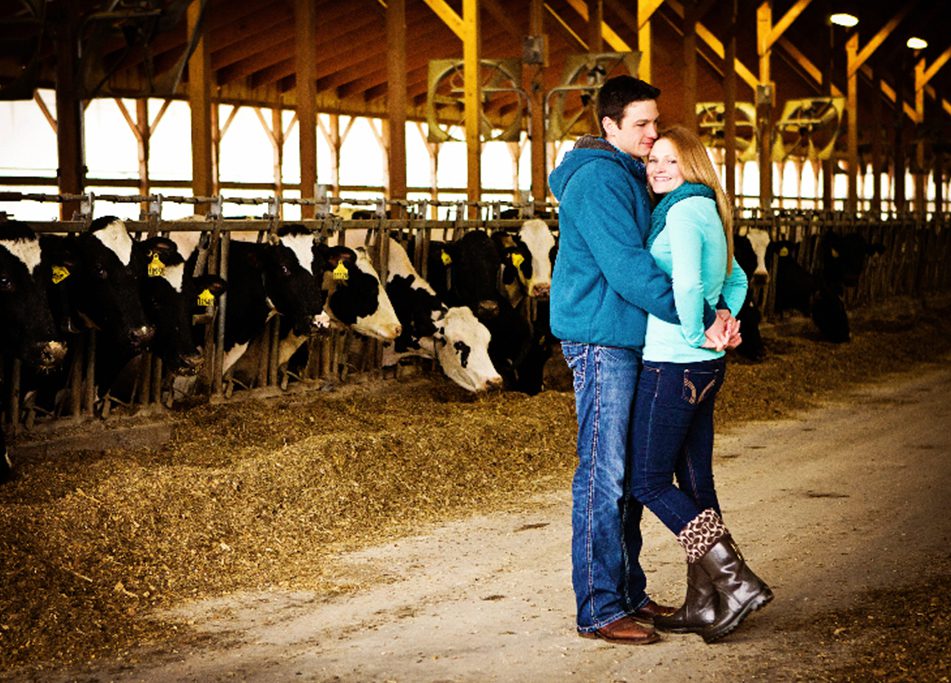Hi there! Welcome to our brand new website and blog! I’m Kendra Lamb, one of “the moms with the moos”. I’m a 5th generation dairy farmer whose love for cows and farming started at an early age. I studied Animal Science at Cornell University and moved to western NY after college to work for an animal health company. As fate would have it, I met the man I would marry through that job. We’re now married and are raising our two children (and 2400 cows) on our family dairy farm in Oakfield, NY.
Living on a dairy farm takes lots of hard work, with a strong sense of pride, too. We take our work very seriously as we do more than raise cows: we feed and nourish a community. That’s not a responsibility that we take lightly. The work we do as dairy farmers sustains the health of local families, and our community’s economic well-being, too. It’s pretty awesome! And I can’t imagine doing anything else with my life or raising my children someplace other than our farm.

Here in New York state dairy farming is a major industry. There are more than 5,000 dairy farms in our state and all are family owned and operated like ours. It’s our family’s passion to produce wholesome milk and to provide great care to our cows and the land we call home.
Let me show you around our farm, starting with the cows, of course. Our cows are grouped by age and similar stages of lactation. The tags in their ears have unique codes, like a social security number, so we can tell at a glance her life story and important details. Our girls mostly stay in their barns. Cow comfort is a top priority, so they enjoy lots of fans to circulate fresh air, rubber mats to walk on and lots of room to socialize with their pen mates.
They eat a diet that’s formulated for their body size to deliver optimal health benefits. Each cow eats over 100 lbs of food (they burn a lot of energy) and drinks between 30-50 gallons of water. This is important for their health and the quality of their milk.
Our staff is attentive to our cows. We have to be. We can learn a lot about a cow’s health by observing her eyes, her posture and her behavior. If we detect something isn’t right, we immediately take action.
At our farm, we use sand as bedding in the barns. Sand is soft and conforms to the cow’s body, giving each cow a comfy place to rest. Cows lay down or nap for 10 to 12 hours a day.
Let’s talk milking! We milk our cows three times a day. Cows love a schedule and thrive on routine. Milking is a feeling of relief for them, too. They enjoy it. Not milking frequently would be uncomfortable for them.
Every farmer has a different type of milking parlor. Ours is a rotary milking parlor, or a cow carousel. Our girls love to take a ride, as soon as a stall opens up a cow steps on. The full ride takes 10 minutes, and it only takes about five minutes to milk each cow. We use milking machines, which are hygienic and efficient. To start the milking process, the cow’s teats are wiped with gentle disinfectant (think of us washing our hands before we eat). Then we dry her off with a clean towel and put on the milking machine. The milk starts flowing almost immediately. The machine comes off automatically when the cow is done. Then they step off and it’s back to the barn for a big meal and a rest.
The milk is stored in large refrigerated vats, and it’s immediately tested for purity. It’s tested again when the milk truck arrives at the milk plant. We fill up 3 milk trucks each day, that’s 24,000 gallons of milk! At the plant the milk is pasteurized and homogenized and is then either bottled or made into delicious cheese, yogurt , ice cream or other products.
Milk goes from cow to your table quickly, sometimes within only 48 hours. You can’t get more “farm to table” than this!
Our farm is a conventional dairy farm, we produce the regular milk that is in the store or school milk carton. While there are lots of different labels on milk in the grocery aisle, please don’t miss this: ALL milk is free from antibiotics. If a cow is ill and our veterinarian recommends that we administer medication, she will be milked in another location and her milk is kept separate so it can’t enter the food supply. Once our girl is back to full health and her milk is free of medicine, then she can return to the milking herd. There are lots of safety checks along the way to make sure our food supply remains pure and safe.

You may have read that it has been a tough year for dairy farmers. The price we’re paid for our milk fluctuates a lot and this has been a low year. Farmers are stressed financially and are having trouble holding onto the family business. It’s sad and it’s a complicated system to fix. However, we’re eternal optimists by nature and are hopeful that things will turn around soon.
It’s true that there are challenges in this industry, but the rewards are amazing! We are truly blessed and privileged to be dairy farmers and we thank you for trusting us to put food on your family’s table.
Thank you for being part of our journey!








